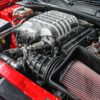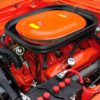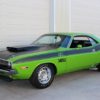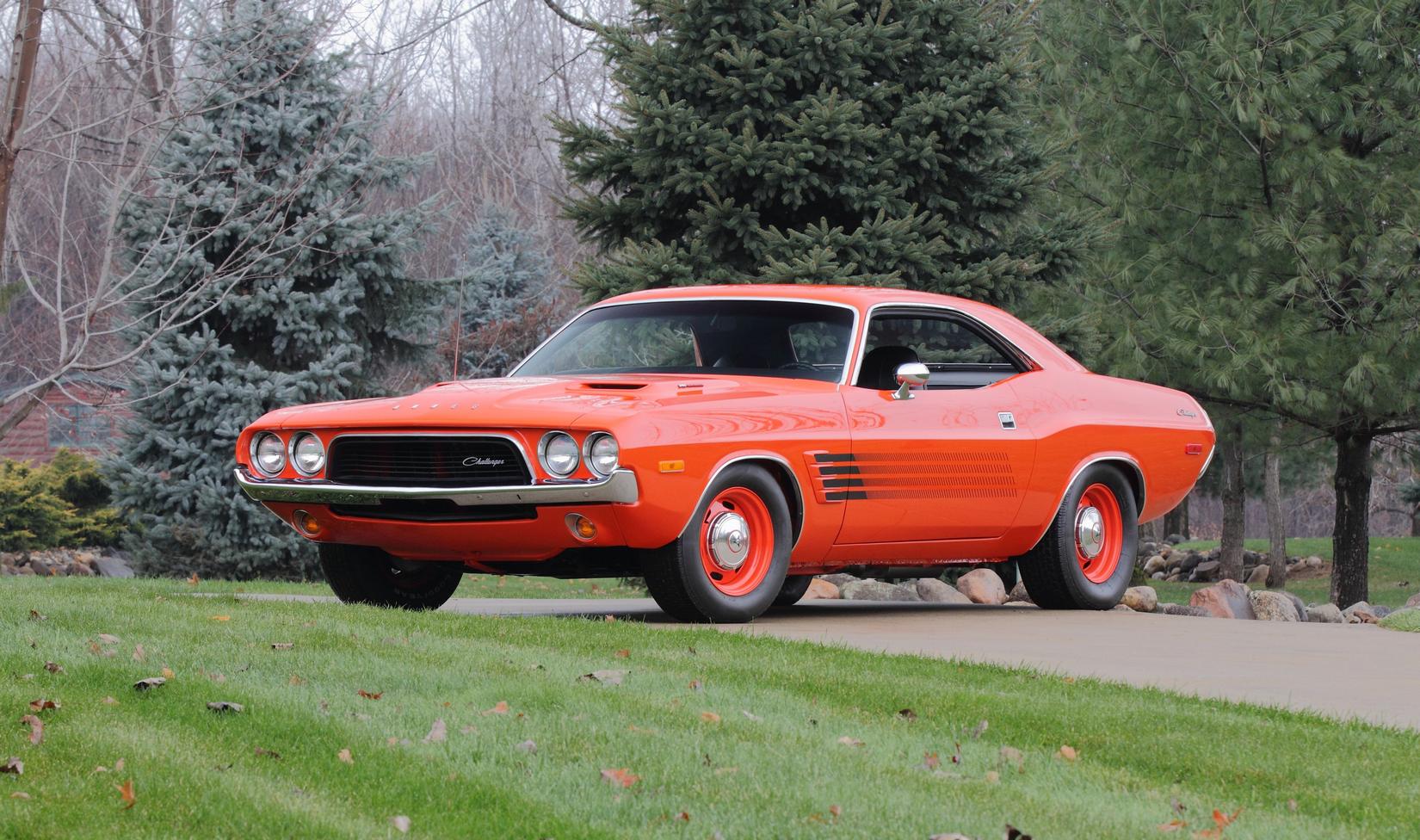The gas wars are now in full swing and the Challenger was hanging on with all its glory. The car was still becoming more safety-friendly and conservative. Not that all other companies weren’t feeling the crunch, even the Mustang production was down almost 75% from 1964-5s numbers, but the crunch for the newcomer Challenger was getting painful.
| Model | 1972 Dodge Challenger |
| Type | 2-door |
| Names & Trims | Coupe, Rallye |
| Engines | 225ci I6, 318ci V8, 340ci V8 |
| Price range | $2,790 – $3,082* |
*Consumer Guide: Encyclopedia of American Cars
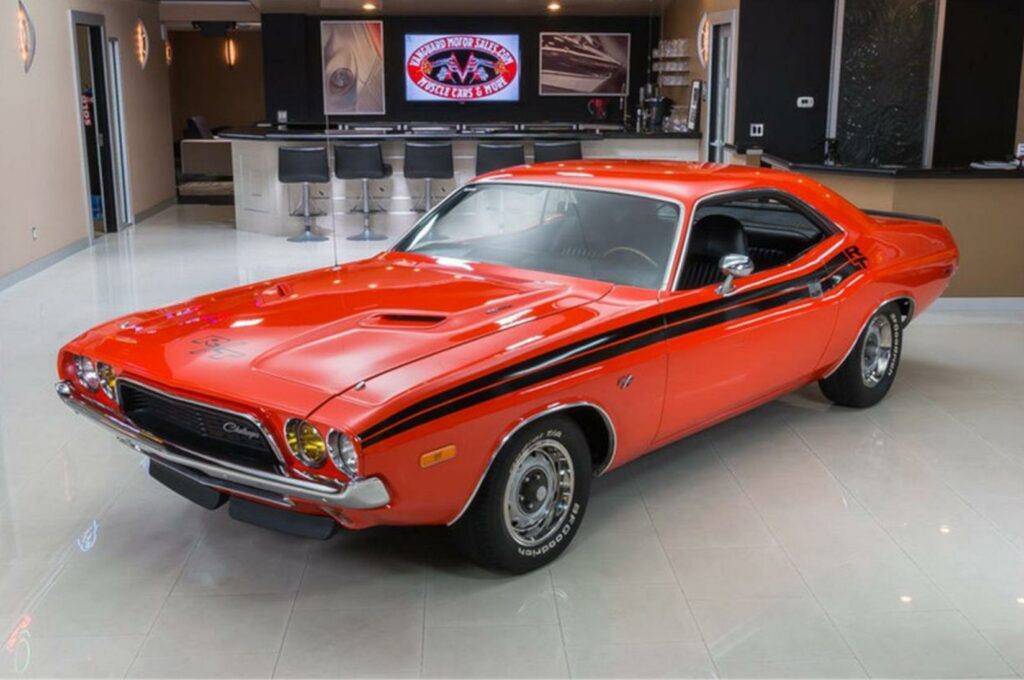
Even though the Challenger was re-styled again, the more radical changes still made for a good looking and sporty car. The shape was retained and for the most part – side by side – the cars are still quite similar. The real changes all included things that made the new car look faster vs actually being fast. The fuel crisis changed the landscape of all the muscle cars and pretty soon the nomenclature would have all but disappeared.
1972 Exterior Changes
The front of the car now had a major re-style and was very different from year-one. The grille has been made into one large hole with the bumper slicing through the look – almost like an automotive “retainer” of sorts. The headlights were now part of a full wrap around area that was painted the color of the car – very different from the blackened look of the ‘70 and ‘71. On top of that, most ‘72 models typically had bumperettes on either side adorned with rubber strips for extra safety.



The rear of the Challenger was also re-designed heavily. The lights were now a foursome vs two for the previous years. Back-up lights were integrated into the innermost taillights and the overall taillight size was smaller than ever. The middle section was now a full-size “rectangle” that was rather large, plain looking and lost it’s style. The rear fascia was also less indented, more subtle, and not overly attractive.




So, looking fast was the new rage. The new forward side vents (non-functional) were now given a fade-look to resemble movement; the hood still had ram-air vents (non-functional); and even the maw in the front seemed to provide more air to a powerful engine (not the case). The scourge that was the Challenger was now just a “trick pony”.
Available 1972 Challenger Models
1972 Challenger

The possible Challenger models to get is now down to TWO. That’s all. R/T, SE, T/A, Convertible, have all disintegrated from the line-up. The starting model was still referred to as “Challenger” and had a massive amount of options – since it integrated many of the options of the lost models. Six and eight cylinder models were available and horsepower, though down because of growing restrictions, were still high enough to be “lively”
1972 Challenger Rallye

With the venerable R/T disposed of, the only true sport edition in ‘72 was called the Rallye. Engine options would get you up to a nice 340ci V8, but the other monsters (383, 440, & 426) were a thing of the past. Not that the 340 couldn’t get you there genuinely fast, but this was no longer the feared muscle car. It was slowly (pun intended) becoming a Sunday-drive car vs a drag strip car.
Rallye cars still came with things like a 240hp, 340ci V8, a rallye instrument cluster, 4-speed transmission, heater/defroster, multi-colored interiors, and more. You could also order louvers, tape stripes, and performance hood (though the “shaker” was gone). This car was much more the “looker” than performer, and for that reason, still commanded attention wherever it went.
1972 Dodge Challenger Specifications, Options, & Interior
Physical Dimensions
The 1972 Dodge Challenger’s physical dimensions:
- Length: 191.3 inches
- Width: 76.3 inches
- Height: 50.9 inches
Interior

Interiors were the least change of the Challenger’s new look. The seats’ ridges again were shaped slightly different; the dash and steering wheels were shaped slightly different (and as with the steering wheels – not many choices), and the view over the hood… not nearly as exciting. Still, one couldn’t ask for much more from a driving standpoint… you just were leery of stoplight duels.
Hoods

1972 hood options were the most limited and humble to date – with just two choices. The base hood was very similar to 1971 and had modest groves down each side. Nothing outlandish, but still very apropos for the car.
The Rallye hood (pictured) was the only performance option. The T/A and R/T “shaker” hoods were now part of memory-past and only a modest center stripe was available to spruce it up. Anything out there with anything else, would be a ’70/’71 tribute and not a stock ‘72. I can say that I am a fan of the front clip (restyled facia and simplistic hood). I just would’ve looked better with a 440.
1972 Dodge Challenger Engines
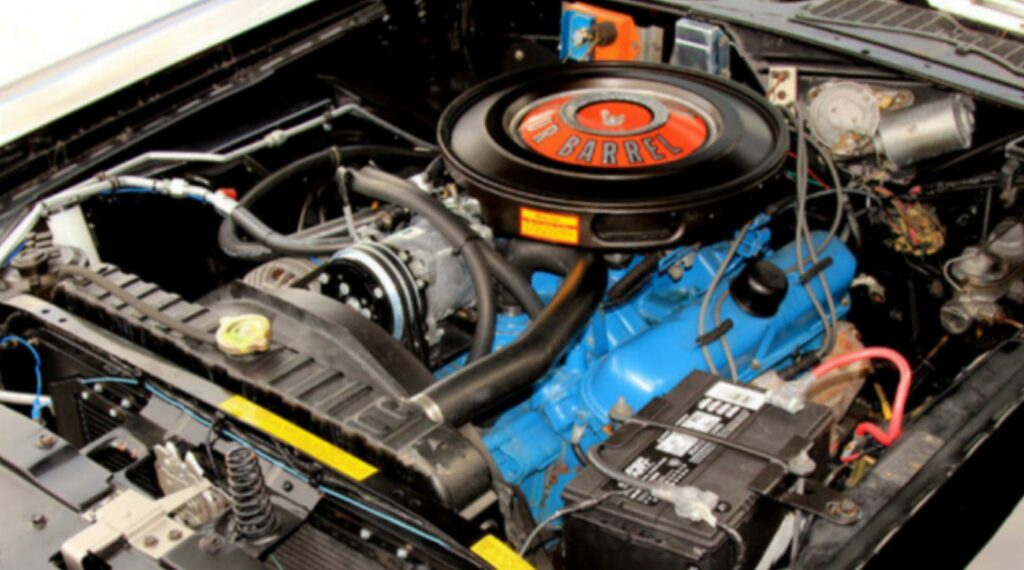
Base engine for the Challenger is now the 225ci I6 – with the 198 no longer an option. Rated at a myopic 110 net horsepower, the 6-cyl would be the ultimate in “errand-running” vehicles – awesome looks, but no burnouts. With a 0-60mph over 10 seconds, you’d not be in a hurry anywhere.
The next step up would be the 318ci V8. All 150 net horsepower of it would get the Challenger “movin’”, but still wouldn’t be any better than 16s in the quarter mile. With the extinction of the big-block motors (383, 440, and 426), the only recourse was a 240 net horsepower 340ci V8. Not even available with the six-pack option, the 5.5L was still strong enough to crack into the 15s through the trap. Unfortunately, however, the days of 100 mph passes were long gone.
| Option code | Size (cu. in.) | Size (c.c.) | Type | Carb. | Net Power (B.H.P.) |
| C | 225 | 3688 | 6 CYL. | 1 bbl. | 110 |
| G | 318 | 5212 | V8 | 2 bbl. | 150 |
| H | 340 | 5573 | V8 | 4 bbl. | 240 |
1972 Challenger Transmissions
There were three available transmissions available for 1972:
- Three-speed synchronized manual (floor shift).
- Four-speed synchonized manual (floor shift) optional with 340ci V8 only.
- Torqueflight three-speed auto (selector lever is column mounted except on optional console equipped models). Optional with all engines.
Wheels & Tires
| Engine | Standard | With Disc Brakes | Optional | Recommended Brand |
| 225 | 7.35×14 | F78x14 | F78x14 F70x14* | Goodyear(F70)/Firestone(7.35) |
| 318 | F78x14 | F78x14 | F70x14* | Goodyear |
| 340 | F70x14 | F70x14 | E60x15** | Goodyear Polyglas GT |
* Only with heavy duty suspension. ** Only with power front disc brakes, dealer installed.
1972 Production Numbers
1972 showed the writing on the wall – with record low sales for the model. With just a hair over 8,100 Rallye coupes sold, there didn’t seem like there was anything Dodge could do to stop the demise of the Challenger. Still, there are enough examples out there if you need the 1972 Challenger fix… at a respectable price as well!
| Challenger cpe | 18,535 |
| Challenger Rallye | 8,123 |
*Consumer Guide Encyclopedia of American Cars


